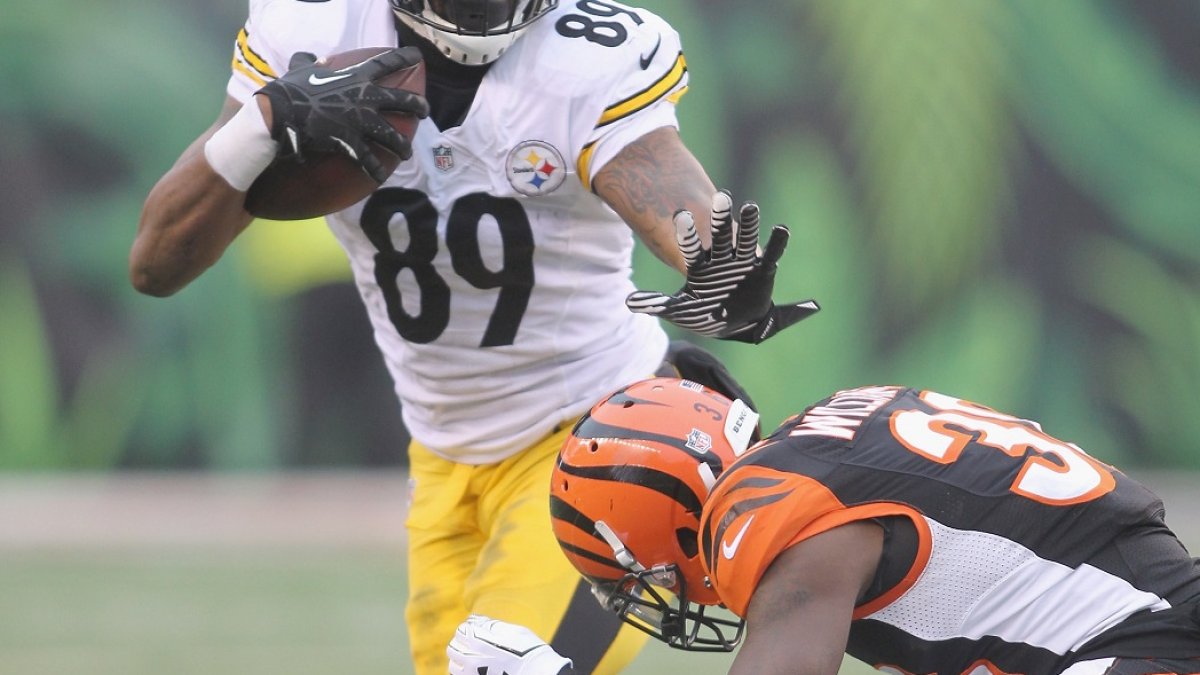(“Today's Crazy Fantasy Stat” is an occasional offseason offering from PFF that highlights something that catches our eye and aids in our preparation for the 2017 fantasy season.)
There are several methods for measuring a pass-catcher’s efficiency. Yards per reception measures how much receivers gain per time they catch the ball. Yards per target measures how much they gain per time they are expected to catch the ball. But one of our favorite metrics here at PFF is yards per route run. This measures how many yards a pass-catcher gains when they have a chance of catching the ball.
Generally speaking, if a player is running a pass route, it’s with the idea to at least potentially catch the ball, so a higher YPRR average means either (a) a player has his quarterback’s trust more often, and/or (b) a player can get open more often than his teammates. Either one (or both), it reflects well.
(Subscribe to all our fantasy content, or get everything PFF offers with an All-Access subscription.)
In fact, take a look at the top 20 (out of 1,909) single-season YPRR totals of the last 10 years, minimum of 30 targets. You’ll see a lot of big names:
| Top 20 player-seasons in YPRR, last 10 years (min. 30 targets) | |||||
| Year | Player | Team | Yards | Routes run | YPRR |
| 2008 | Steve Smith | CAR | 1405 | 367 | 3.83 |
| 2008 | Darren Sproles | SD | 342 | 99 | 3.45 |
| 2007 | Andre Johnson | HST | 851 | 265 | 3.21 |
| 2016 | Rob Gronkowski | NE | 540 | 170 | 3.18 |
| 2016 | Julio Jones | ATL | 1409 | 452 | 3.12 |
| 2011 | Victor Cruz | NYG | 1536 | 498 | 3.08 |
| 2015 | Julio Jones | ATL | 1871 | 615 | 3.04 |
| 2010 | Kenny Britt | TEN | 775 | 256 | 3.03 |
| 2012 | Andre Johnson | HST | 1598 | 530 | 3.02 |
| 2016 | Ladarius Green | PIT | 304 | 101 | 3.01 |
| 2008 | Roddy White | ATL | 1384 | 461 | 3.00 |
| 2009 | Wes Welker | NE | 1348 | 451 | 2.99 |
| 2011 | Jordy Nelson | GB | 1263 | 424 | 2.98 |
| 2014 | A.J. Green | CIN | 1041 | 352 | 2.96 |
| 2012 | Pierre Garcon | WAS | 633 | 215 | 2.94 |
| 2015 | Antonio Brown | PIT | 1841 | 632 | 2.91 |
| 2011 | Andre Johnson | HST | 492 | 169 | 2.91 |
| 2015 | Steve Smith | BLT | 670 | 231 | 2.90 |
| 2015 | Alshon Jeffery | CHI | 807 | 281 | 2.87 |
| 2016 | A.J. Green | CIN | 964 | 337 | 2.86 |
Looking at this list, you have Hall-of-Famers-to-be (or at least ones on track) like Steve Smith, Andre Johnson, Rob Gronkowski, Julio Jones, Roddy White, Wes Welker, Jordy Nelson, A.J. Green, and Antonio Brown. You have stars-for-at-least-a-while in Victor Cruz, Kenny Britt, Pierre Garçon, and Alshon Jeffery. You have deserves-his-own-category-as-a-football-player Darren Sproles.
And you have Steelers tight end Ladarius Green.
Green didn’t play much in 2016, owing to an ankle injury and a concussion. In six games, he was targeted 32 times, including an 11-target, 110-yard, one-score game in Week 13. But he joined Pittsburgh last offseason with plenty of fantasy potential, having previously been the heir-apparent to Antonio Gates in San Diego. His usage in San Diego had been inconsistent, with plenty of routes run in the slot, but not many targets there, and his usage shifted in Pittsburgh; in 2015 in San Diego, two-thirds of Green’s routes were run out of the slot, while in 2016 in Pittsburgh, only 29.7 percent of his routes were. Moving out of the slot led to more yards per route.
It’s true that Green’s YPRR success in 2016 came on a small sample, and with a larger sample, the number would likely drop. But as it is, small sample or not, he’s one of only 11 players to top 3.00 yards per route run in the last decade, and there were plenty of player-seasons with similarly small samples in that group that did not have the efficiency Green offered.
Health is always going to be an issue with Ladarius Green, as it is with a lot of tight ends. But the glory of that is that you can stash a player with upside like Green’s, and if and when he’s out, you can easily move on to one of a number of tight ends with similar floors but limited upsides — the C.J. Fiedorowicz/Charles Clay/Jared Cook level of players.
Gronkowski and Jimmy Graham aside, tight ends generally don’t come with super-high fantasy ceilings. Green might not either, once his sample size of performance grows. But there is reason to believe he could. Assuming health reports on Green are good entering fantasy draft season, he warrants consideration as a mid- to low-TE1.



 © 2025 PFF - all rights reserved.
© 2025 PFF - all rights reserved.